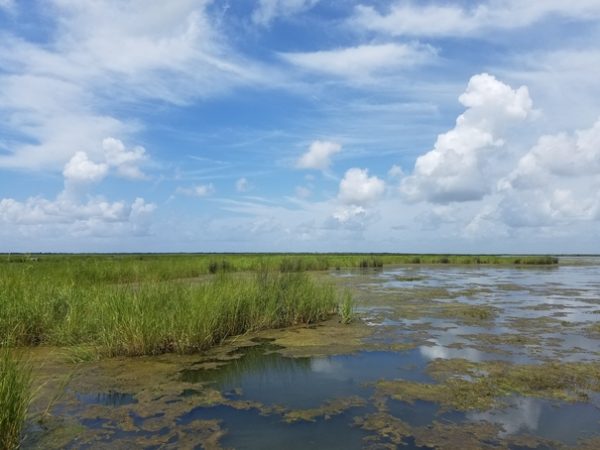April 20, 2020 marks a very unfortunate anniversary. A decade has passed since the 2010 Deepwater Horizon (DWH) oil rig explosion spewed millions of barrels of oil into the Gulf of Mexico for nearly three months, resulting in the greatest environmental disaster in our country’s history. It’s a sad anniversary for the 17 workers who were injured and especially for the loss of the 11 lives that came to a sudden, early end and a decade of grief for their loved ones. It’s an anniversary of significant damage of not only Louisiana’s coastline, but of the entire Gulf Coast – a decade of planning and executing projects in an attempt to repair the devastating impacts on wildlife and ecosystems.

If there can be any silver lining to such a catastrophe, may it lie in the fact that it has also been a decade of opportunity. April 20, 2020 also marks an anniversary of a more robust coastal program. Fortunately, the Louisiana Coastal Protection and Restoration Authority (CPRA) already had in place a master plan to prioritize coastal projects using the best available science to prepare for not only the next 10 years, but the next 50.
“Having this publicly-vetted plan already in place allowed Louisiana to immediately mobilize oil spill resources to implement projects that would contribute to the greatest possible recovery and the best long-term results,” said CPRA Executive Director Bren Haase.
As a result of the DWH disaster, BP and others responsible for the oil spill were required to pay over $16 billion for damages to the Gulf over a 15-year period. Louisiana will receive over $7.29 billion of that money to put towards projects through 2031. In addition, the state will also receive $1 billion for economic damages.
“The oil spill reinforced our responsibility to protect our coast and has given us the resources to construct game-changing coastal restoration projects in South Louisiana that have been envisioned for decades,” said CPRA Chairman Chip Kline. “For the first time in state history, the progress we are making in restoring our coast is able to match the scale of the problem itself.”
To date, money Louisiana has received from the legal settlement has resulted in:
- 9 projects completed (creating or benefiting 3,400 acres)
- 12 projects in or near construction
- 26 projects in design

Completed projects include the recent Queen Bess Island Restoration. The island, which lies northeast of Grand Isle in Jefferson Parish, is home to the fourth-largest Brown Pelican rookery in the state with about 15-20 percent of the state’s total pelican nesting activity. Just last year, nesting pelicans were able to use only five of its 37 acres. Restoration of Queen Bess was completed in February. Just days after the last of the construction equipment left the island, biologist were thrilled to report that nearly 1,000 pelicans were on the island!
Upcoming projects include the long-awaited River Reintroduction into Maurepas Swamp project, a freshwater diversion that will reconnect the Mississippi River to the swamp, restoring one of the largest remaining coastal forested wetlands on the Gulf Coast. This project has been talked about long before the DWH disaster but will finally get its day! Currently nearing construction, the project will benefit approximately 45,000 acres of cypress tupelo swamp – bigger than any other project in Louisiana’s coastal program history to date.
Other major projects include the Mid-Barataria and Mid-Breton sediment diversions. Both the Barataria and Breton Basins have experienced significant land loss due to a lack of sediment input, hydrologic alteration, subsidence, sea level rise, and saltwater intrusion from the Gulf. Both projects are currently in the engineering and design phase.
Much has been done in the last decade and much more will be done in the next.
For more information on projects and funding, visit http://coastal.la.gov/dwh10/
